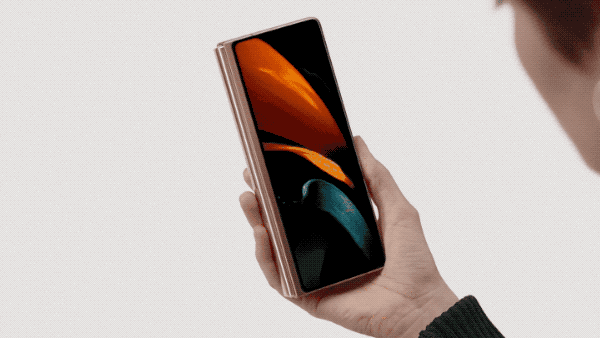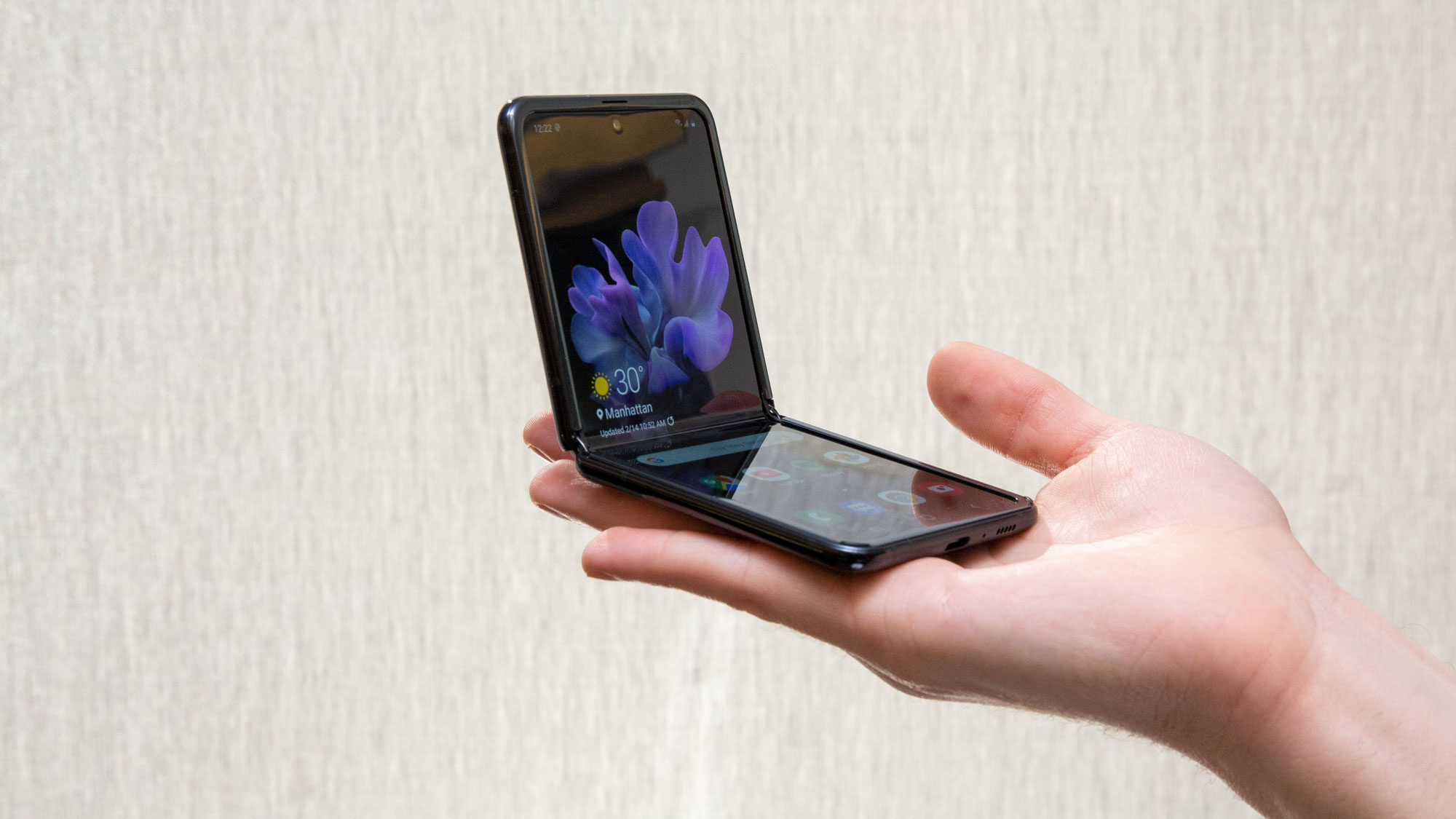Samsung is doubling down on foldable phones in 2021 — and it might just work

Samsung thinks you're ready for more foldable phones in the coming year. But are foldable phones finally ready for you?
We're about to find out. Closing out 2020, Samsung Electronics president TM Roh posted an overview of the electronics giant's plans for mobile in 2021, and one of the highlights appears to be that the Galaxy Z Fold 2 and Galaxy Z Flip 5G can expect some company very soon.
- Galaxy Z Fold 3: Price, release date and rumored features
- Galaxy Note 20 Ultra vs. Galaxy Z Fold 2: Which is the ultimate Samsung phone?
"True to our heritage of staying ahead of the curve with trailblazing mobile tech, we’ll be expanding our portfolio of foldables, so this groundbreaking category is more accessible to everyone," Roh wrote.
That's quite a change, given the rough start Samsung faced on the foldable front. The initial Galaxy Fold, first previewed in 2019, ran into some design flaws, forcing Samsung to delay the launch. When it did debut, the original Fold showed promise, though not nearly enough to justify its $1,980 asking price.
Samsung's foldable phones are still pretty pricey, but otherwise things have improved dramatically in the past year. The Galaxy Z Fold 2 addressed many of the original Fold's problems, introducing a more durable design. The Galaxy Z Flip gave Samsung a foldable flip phone that was much more polished than the rival Motorola Razr. And both the Fold and the Flip supported a new Flex mode which took advantage of foldable designs to let you use apps in new ways.

"Samsung recognizes that its early bet on foldables can fully pay off if Samsung expands into affordable price segments while it has minimal competition," said Avi Greengart, founder and lead analyst of Techsponential, in a post on Samsung's 2021 phone plans.
There's another reason Samsung may want to strike while the iron's hot, said Ramon Llamas, IDC's research director for devices and displays. "Samsung seems to have found more success than its competitors like Motorola in the US or Royole in Asia," he said. "Unless other vendors gain traction with their own foldable smartphones, this could be a product category that Samsung can lock up for itself."
Get instant access to breaking news, the hottest reviews, great deals and helpful tips.
Just how will Samsung do that, though? The answer appears to hinge upon building on some of its early successes with this year's batch of foldable phones. Here's a few reasons why Samsung is bullish on the prospects for future foldable devices as a new year looms.
Foldable phone screens have gotten more durable
The first foldable phones featured plastic displays — a necessary compromise since glass isn't really that good at bending, but one that left devices feeling flimsy and cheap. That's not what you want to convey when you're asking people to pay up to $2,000 for a phone.

Starting with the Galaxy Z Flip, Samsung inserted a layer of ultra-thin glass in its foldable lineup. (The Galaxy Z Fold 2 features that same layer, too.) The difference was night and day. Now the devices had the kind of polish you'd expect from a pricey phone while still managing to withstand the kind of regular wear and tear that comes from folding and unfolding the screen.
Samsung figured out how to optimize the foldable form factor
A phone that just folds shut is little more than a party trick. To be a more compelling option, a foldable phone needs to take advantage of its unique ability to expand and contract — and that's precisely what Samsung managed to do this year.
We've mentioned the Flex mode, which takes advantage of the hinge on both the Galaxy Z Fold 2 and Galaxy Z Flip to keep part of the screen at a 90-degree angle. That allows certain apps to use the top part of the display as a viewing area, and the bottom for controls — think YouTube videos playing on one half of the device, while you can control playback and comment on the video on the other part of the screen.

The Fold, in particular, continues to be a multitasker's dream, with the ability to run three apps at once on its 7.6-inch main display. You can even link those apps together so that they launch at the same time. And app continuity allows you to access an app on the Fold's now-larger cover display and pick up where you left off when you open up the phone to use the larger screen.
If anything, Samsung needs to do more of this to popularize foldable phones, including working with app makers to ensure that their software is optimized for foldable screens. "Do all the apps [potential foldable phone owners] want to use run perfectly on a foldable device?" Llamas asked. "If not, then purchasing a device like this becomes a non-starter."
Foldable phone prices are about to come down
In promising to expand Samsung's foldable lineup, Roh promised more "accessible" devices. Take that to mean they'll be more affordable because, frankly, that's the only direction Samsung can go.
For all its improvements, the Galaxy Z Fold 2 still costs $1,999 — out of the budgets for most smartphone shoppers. The Galaxy Z Flip is cheaper, but only relatively so, with the 5G version available for $1,449. Samsung's prices aren't out of line with other foldable devices, either — the Motorola Razr 5G costs $1,399. The LG Wing is cheaper at $999, but that's not a true foldable phone — rather, it's got a second screen tucked under the first that swivels out when you need it.
Even at $1500, [foldable phones] are still more expensive than most other flagship devices.
— Ramon Llamas, IDC
"Even at $1500, [foldable phones] are still more expensive than most other flagship devices including Apple’s iPhone 12 Pro Max or even Samsung’s most popular Galaxy S devices," Llamas said.
Joining the likes of the LG Wing below the $1,000 mark would be the target if Samsung is serious about its quest for more accessible foldables. "To grow its market share — and steal some iOS users along the way — Samsung needs to bring refined, attractive foldables below the $1,000 price point where most phone sales live," Techsponential's Greengart wrote.
Foldable phone outlook
Even with more foldable phones coming in 2021, don't expect the iPhone 13 or Galaxy S21 to be brushed aside by the latest Galaxy Z Fold — or whatever other design Samsung has in the pipeline. For all the progress that foldables have made in a short time, they're still a niche product, even if the price does drop a little bit.
"The bigger viewing area is certainly a draw, and so is having multiple apps open on the same screen," IDC's Llamas said. "But when you get down to it, most users would probably prefer to save the money and still enjoy a quality experience on a slab-style smartphone. Expect foldables to go to the technophiles and early adopters."
Philip Michaels is a Managing Editor at Tom's Guide. He's been covering personal technology since 1999 and was in the building when Steve Jobs showed off the iPhone for the first time. He's been evaluating smartphones since that first iPhone debuted in 2007, and he's been following phone carriers and smartphone plans since 2015. He has strong opinions about Apple, the Oakland Athletics, old movies and proper butchery techniques. Follow him at @PhilipMichaels.

